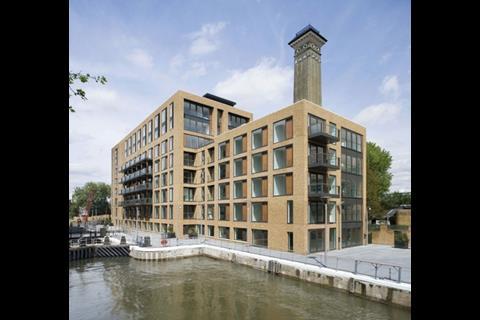If they are ever to be built, BritainŌĆÖs planning system needs radical change. The planning white paper, now out to consultation, aims to streamline applications. But critics claim it does little to stop councils playing politics with housing.
Over the next three weeks, we ask a builder, a planner and a leading housing adviser three key questions: whatŌĆÖs gone wrong, whoŌĆÖs to blame and how can it be fixed? First up, Mark Leftly meets Tony Pidgley, the most influential housebuilder in Britain.
Tony Pidgley says his job is his hobby. If that is the case, it is a time-consuming one: he left the house at 5.40am, had his first meeting an hour later and will knock off early at about 8pm.
It is the second time that ║├╔½Ž╚╔·TV has met Pidgley this week. On the first occasion, he kept us waiting 40 minutes, but still barked that we hadnŌĆÖt given him enough time to properly explain his views. He insisted we meet again two days later, shoehorning an hour into his schedule to show us around two of his central London sites.
Pidgley was worried that without being able to see these schemes, we would be unable to fully understand his dismay at the planning system and at accusations that housebuilders including his company, urban regeneration specialist Berkeley, are landbanking.
Housebuilders everywhere are fed up with the planning system, arguing that the politicking of local councillors is consistently delaying and blackballing the schemes they are so desperate to build. And this at a time when the new prime minister has placed housing supply at the top of his agenda.
Gordon Brown would do well to listen to Pidgley. He is the biggest name in the sector, the man all national newspapers seek to quote because of his extraordinary childhood ŌĆō a BarnardoŌĆÖs boy later brought up in a caravan by a gypsy family ŌĆō and his extraordinary ability to predict the housing market. Then thereŌĆÖs his personal wealth, estimated by The Sunday Times to be ┬Ż123m.
Most importantly, Pidgley wonŌĆÖt pull his punches, dismissing the planning white paper as something that the government has worked on ŌĆ£in isolationŌĆØ. Will it help improve the system? ŌĆ£No, is my short answer.ŌĆØ
At the second meeting, Pidgley does not start off with a ŌĆ£helloŌĆØ, but slams down an A4 sheet of paper on the boardroom table at his Chelsea Bridge Wharf development. It outlines his basic argument for why planning is now such a problem.
Basically, he believes the issues today are ŌĆ£infinitely wider and more complicatedŌĆØ than they were 30 or even 10 years ago. Back then, there was no concept of a section 106 agreement. In the seventies, getting permission for a housing scheme was a simple matter of what went where and what it looked like. Now, social goods such as highway infrastructure and affordable housing are being delivered through planning gain, and much the same is being suggested for energy and climate change measures.
This is coupled with the fact that 70% of houses in 2007 are being built on brownfield sites, which are often either polluted or in logistically difficult inner-city locations.
ŌĆ£The whole game has changed,ŌĆØ says Pidgley. ŌĆ£I donŌĆÖt blame the planners. In their defence, thereŌĆÖs no mechanism to train them, so their understanding [of big regeneration schemes as opposed to greenfield housing] is limited and so is the developerŌĆÖs ŌĆō thereŌĆÖs only a small number of us that have built them.ŌĆØ
The section 106 negotiations are what particularly irk Pidgley, as shown by this typically scattergun analysis: ŌĆ£Why should it take us six months after a resolution to grant ŌĆō which is effectively a planning permission ŌĆō for a 106 to be signed? IŌĆÖve got some that go up to 12 months. Why? WeŌĆÖve had the debate about it, weŌĆÖve been through due process, everybodyŌĆÖs had their input and theyŌĆÖve had their consultation.
ŌĆ£Once weŌĆÖve got the resolution to grant ŌĆ” If the section 106 negotiations take eight months, thatŌĆÖs 12 months in total because youŌĆÖve got to then run a judicial review.ŌĆØ
Section 106s look likely to become even more muddied by the expected introduction of planning gain supplements in 2009. This would tax housebuilders on any uplift in the value of the land after permission is granted ŌĆō a tax that would be difficult to determine.
What housebuilders want is certainty, which is why Pidgley advocates replacing section 106s with a roof tax. This taxes the developer per square metre of development to ensure that the infrastructure needed to service it can be fully paid for. ItŌĆÖs simple and avoids lengthy negotiation.
If they gave the industry the challenge of producing more units, we would rise to that. We simply havenŌĆÖt got the planning or the land
Pidgley has been involved in a number of delayed schemes of late. Berkeley has owned a 4.1ha site in Honeypot Lane, Middlesex, for five years. The site has been repeatedly knocked back for development, first because it was not commercial and then for being too dense. Now scaled back to fewer than 800 homes, a decision is expected this month.
Similarly, Pidgley has been frustrated in his ambitions to build 2,500 homes at Woodberry Down in Hackney, east London: ŌĆ£I won that a year and a half ago and I havenŌĆÖt got planning permission and IŌĆÖm in partnership with the local authority!ŌĆØ
Pidgley believes political in-fighting is the root cause of delay to many schemes, including some of his own, as opposition parties seek to thwart the plans of governing ones in town halls. ŌĆ£Planning has become so political,ŌĆØ he sighs.
But the politicians and the civil service have long blamed housebuilders for the countryŌĆÖs lack of new homes. They have accused the industry of landbanking ŌĆō buying up land and hoarding it. Pidgley shakes his head: ŌĆ£None of us are landbanking.ŌĆØ He points to his own figures, which show he has enough land to build more than 30,000 units. This, he says, is misleading. For example, the 30,000 includes nearly 800 at Honeypot Lane, although Berkeley is not yet permitted to build there.
He goes on: ŌĆ£We win a big site like Woodberry Down. As a public company we canŌĆÖt keep it a secret. So in our figures we put 2,500 for Woodberry Down. If we get planning in the next 12 months, IŌĆÖll be delighted and weŌĆÖll put it into production.ŌĆØ
As he gesticulates at the Chelsea Bridge Wharf site behind him, Pidgley makes another point: sites such as this are too tight to build all the homes at once.
He instructs his chauffeur to drive us to his Grosvenor Waterside development on the other side of the river to illustrate his point. There would be no way enough cranes could get on either of these sites, he says, and 20-30 lorries a day supply materials as it is ŌĆō any more would involve closing major roads.
ŌĆ£Just because you have planning on a site for 500 units doesnŌĆÖt mean you can build and occupy 500 units in one year. ItŌĆÖs a physical impossibility.ŌĆØ
These arguments have not stopped the Office of Fair Trading launching a probe into housebuilding, announced last month. The agency said: ŌĆ£There appears to be significant consumer detriment in the form of low supply response to sustained rising prices, low levels of quality and a lack of innovation.ŌĆØ
Pidgley, though, welcomes the investigation.
ŌĆ£I hope theyŌĆÖre going to be thorough and that theyŌĆÖre going to engage with us guys ŌĆō theyŌĆÖve got a lot of things to understand.ŌĆØ
For a start, he says, they should see the reality behind the landbanking figures. And then thereŌĆÖs the flaws in the Royal Town Planning InstituteŌĆÖs claim that the top nine housebuilders have planning permission for 225,000 homes, with only 170,000 a year built by the industry as a whole ŌĆ”
Rather excitedly, Pidgley points out that if planning permission was sped up and more land was released as brownfield, the industry could build an extra 250,000 homes a year. ŌĆ£If they gave the industry the challenge of producing more units, we would rise to it. We simply havenŌĆÖt got the permissions and land to come to the challenge.ŌĆØ
He takes one last swing at the government: ŌĆ£Go back 15, 20 years. The housebuilding industry used to produce 200,000 houses, give or take. The government through the public sector produced another 200,000. Now the authorities donŌĆÖt produce a single house and theyŌĆÖve said to the private sector side, ŌĆśNot only have you got to up your production, youŌĆÖre going to produce affordableŌĆÖ.ŌĆØ
But maybe the government really has been listening to the likes of Pidgley. Less than a week after we meet, Brown announces his intentions for the largest housebuilding programme since the seventies, saying that he will speed up planning. A quick call to PidgleyŌĆÖs mobile allows him to make the following sage-like assessment: ŌĆ£The government has stopped talking the talk; theyŌĆÖve started walking the talk.ŌĆØ
Postscript
Next week, Katrine Sporle, head of the Planning Inspectorate, gives her views.
































No comments yet